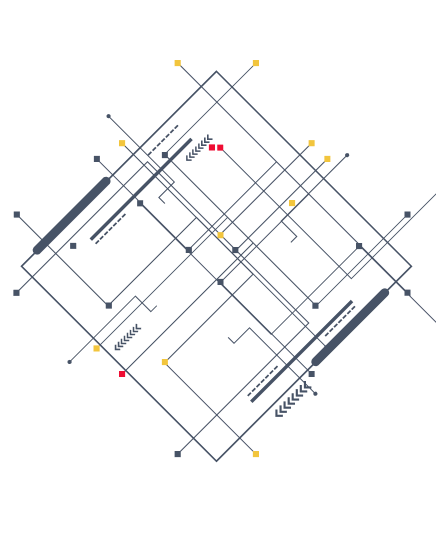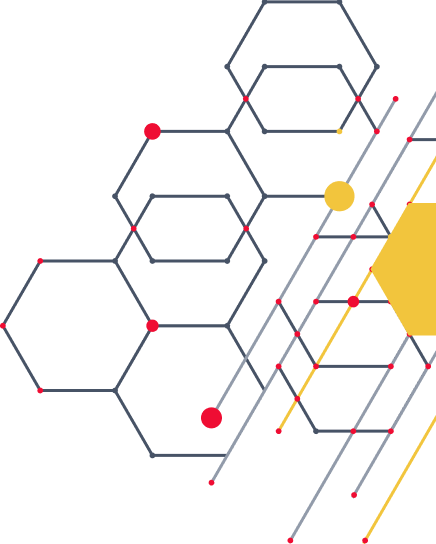Edge AI enables IoT devices to perform real-time analytics directly at the edge, closer to where data is generated. This is increasingly essential for Industry 4.0 applications, autonomous systems, and other time-sensitive IoT use cases. Implementing Edge AI involves several key steps and considerations to ensure optimized performance, reduced latency, and efficient use of resources.
Key Benefits of Edge AI for IoT Devices
- Reduced Latency: Since data processing occurs locally, Edge AI reduces the time lag associated with sending data to cloud servers for analysis. This is crucial in time-sensitive applications like predictive maintenance in manufacturing and smart traffic systems.
- Improved Data Security: Keeping data at the edge minimizes the risk of breaches that could occur during transmission to the cloud, enhancing privacy and compliance with data regulations.
- Reduced Bandwidth: Instead of transmitting all raw data to the cloud, edge devices only send essential, pre-processed data, reducing bandwidth requirements.
- Power Efficiency: Many IoT devices are resource-constrained, but with Edge AI, they can perform analytics using less power, making them ideal for low-power, embedded applications.
1. Understanding the Need for Edge AI
Traditional IoT systems often rely on cloud-based computing for data processing. While cloud solutions are powerful, they’re not always suitable for real-time applications due to latency, bandwidth consumption, and security concerns. Edge AI solves these problems by processing data on the device itself, allowing for real-time analytics without sending data to the cloud.
For instance, in smart manufacturing, sensor data can be analyzed directly at the edge to detect machine faults in real time. This prevents downtime, optimizes performance, and enhances predictive maintenance.
2. Selecting Appropriate Hardware
One of the first challenges is choosing the right hardware for your IoT edge device. Edge AI requires a balance between performance and resource efficiency. Many IoT devices are limited by low power and limited memory, which makes it important to select hardware capable of handling AI workloads without draining resources.
It’s better to turn to RISC-V embedded cores that allow custom AI/ML optimizations. For example, using Codasip’s Design for Differentiation approach, you can design processors specifically tailored for real-time AI tasks on the edge. Combining RISC-V cores with frameworks like TensorFlow Lite for Microcontrollers (TFLite Micro) ensures you can run neural networks efficiently even on resource-constrained devices.
3. Training the AI Model
The core of any AI solution is the model itself. The first step is to train this model in the cloud or on a powerful machine using historical data. After I’ve trained the model, I then optimize it for edge deployment. Edge devices typically require smaller, quantized models that can run efficiently without consuming excessive memory or processing power.
For instance, you can use tools like TensorFlow Lite to transform and optimize trained models for the edge. Quantization techniques allow models to run with reduced precision (e.g., using int8 instead of float32), which dramatically reduces the model size and speeds up inference without significant accuracy loss.
4. Data Preprocessing and Feature Extraction
Real-time data can be messy. It may come from multiple sensors with different formats, sampling rates, or irregular intervals. Before feeding this data into the AI model, it needs to be preprocessed.
You can use platforms like Crosser, which allow for harmonizing and aligning data from different sources before it’s processed by the AI model. This involves aligning timestamps, filling missing data points, and generating new features (such as transforming time-domain data into the frequency domain).
Example: In predictive maintenance, I work with sensor data (e.g., vibration readings) from industrial machines. Preprocessing this data helps extract key features like vibration frequency, which the AI model uses to predict equipment failures.
5. Deploying the Model on the Edge
Once the model is optimized and the preprocessing pipeline is set, the next step is deployment. I deploy the model directly to the edge device, where it runs inference on real-time data. This step is crucial for applications that require low-latency decision-making.
For deployment, you can use frameworks like Edge Impulse or TensorFlow Lite’s inference engine, as they are designed specifically for edge devices. These tools streamline the deployment process, and since they are optimized for low-power, they don’t overload my IoT devices.
Example: In smart traffic systems, edge AI processes video feeds locally to adjust traffic lights in real-time based on traffic density. This reduces congestion without requiring constant data exchange with cloud servers.
6. Handling Continuous Updates
In many IoT scenarios, models need to evolve. Edge AI solutions should support model updates, especially as new data becomes available. I generally implement over-the-air (OTA) updates for edge models to ensure that devices can adapt without manual intervention.
7. Monitoring and Maintenance
Finally, edge devices require monitoring to ensure they are performing optimally. You can implement analytics dashboards to track key metrics such as inference speed, power consumption, and accuracy. This helps you fine-tune the system for performance improvements over time.
Key Use Cases for Edge AI in IoT
- Industrial Automation: In smart factories, Edge AI can monitor machinery in real-time, detecting faults or inefficiencies. For example, sensors installed on machines can feed data to an AI model deployed at the edge, which can detect anomalies or wear-and-tear, preventing costly breakdowns.
- Autonomous Vehicles: Edge AI plays a critical role in self-driving cars by processing sensor and camera data in real-time to make split-second decisions. This includes recognizing pedestrians, other vehicles, road signs, and potential hazards on the road.
- Healthcare: Wearable IoT devices with Edge AI can monitor patient vitals continuously and detect anomalies such as irregular heartbeats or low oxygen levels. This enables real-time alerts and potentially life-saving interventions without depending on cloud servers.
- Smart Cities: Edge AI helps optimize traffic management by processing data from cameras and sensors in real time. Smart traffic systems can adjust signal timings based on live traffic conditions, improving flow and reducing congestion without relying on cloud-based analysis.
Implementing Edge AI on IoT Devices
To successfully implement Edge AI for real-time analytics on IoT devices, let’s use tools like TensorFlow Lite, Edge Impulse, and preprocessing libraries to help with real-time data analytics at the edge.
1. Selecting the Right Edge AI Framework
One of the most popular frameworks for deploying AI models on resource-constrained IoT devices is TensorFlow Lite. It is optimized for mobile and embedded devices, making it an ideal choice for Edge AI.
pip install tflite-runtime
This lightweight version of TensorFlow allows you to convert your trained AI models to a format suitable for edge devices and then run inference on them.
Model Conversion (from TensorFlow to TensorFlow Lite):
import tensorflow as tf
# Load your pre-trained model
model = tf.keras.models.load_model('my_model.h5')
# Convert the model to TensorFlow Lite
converter = tf.lite.TFLiteConverter.from_keras_model(model)
tflite_model = converter.convert()
# Save the model
with open('model.tflite', 'wb') as f:
f.write(tflite_model)
Once the model is converted, it can be deployed to an edge device (such as a Raspberry Pi or a microcontroller) for real-time inference.
2. Data Preprocessing at the Edge
Before feeding raw sensor data into the AI model, data must often be preprocessed. This includes cleaning, normalization, and feature extraction.
Example: Preprocessing Data from an IoT Sensor Let’s assume you are working with vibration data from an industrial machine. Here’s how you can preprocess the data at the edge using Python:
import numpy as np from scipy import fft # Simulated raw vibration data from the sensor raw_data = np.array([0.2, 0.3, 0.4, 0.5, 0.6]) # Normalize the data normalized_data = (raw_data - np.mean(raw_data)) / np.std(raw_data) # Perform Fast Fourier Transform (FFT) to extract frequency-domain features freq_data = fft.fft(normalized_data) # Select the most significant features (for example, amplitude) significant_features = np.abs(freq_data[:len(freq_data) // 2])
Here, we’re normalizing the raw sensor data and converting it to the frequency domain using FFT. These steps reduce the size of the data and emphasize the most relevant features before sending it to the AI model.
3. Running Inference on the Edge
After preprocessing the data and converting the model to TensorFlow Lite, the next step is running inference on the edge device.
TensorFlow Lite Inference Example:
import tflite_runtime.interpreter as tflite
import numpy as np
# Load the TensorFlow Lite model
interpreter = tflite.Interpreter(model_path="model.tflite")
interpreter.allocate_tensors()
# Get input and output tensors
input_details = interpreter.get_input_details()
output_details = interpreter.get_output_details()
# Assuming you have preprocessed data ready (e.g., vibration data)
input_data = np.array(normalized_data, dtype=np.float32).reshape(1, -1)
# Feed the input data to the model
interpreter.set_tensor(input_details[0]['index'], input_data)
# Run inference
interpreter.invoke()
# Get the prediction result
output_data = interpreter.get_tensor(output_details[0]['index'])
print("Predicted result:", output_data)
This code shows how to load a TensorFlow Lite model on the edge and run real-time inference using preprocessed input data.
4. Optimizing the AI Model for the Edge
Optimizing AI models is crucial for ensuring real-time performance on IoT devices, which typically have limited computing power and memory. Techniques like quantization and pruning reduce the model size and computational requirements.
Quantizing a Model with TensorFlow Lite:
import tensorflow as tf
# Load the pre-trained model
model = tf.keras.models.load_model('my_model.h5')
# Convert the model to a quantized TensorFlow Lite model
converter = tf.lite.TFLiteConverter.from_keras_model(model)
converter.optimizations = [tf.lite.Optimize.DEFAULT]
tflite_quantized_model = converter.convert()
# Save the quantized model
with open('model_quantized.tflite', 'wb') as f:
f.write(tflite_quantized_model)
5. Handling Continuous Model Updates with OTA
In real-world IoT deployments, AI models need updates as the environment changes or the model accuracy drifts over time. Over-the-air (OTA) updates can be used to deliver new models to IoT devices.
Implementing OTA Model Update:
import requests
# URL where the new model is hosted
model_url = "https://yourserver.com/model_update.tflite"
# Function to download the new model
def update_model():
response = requests.get(model_url)
with open('model.tflite', 'wb') as f:
f.write(response.content)
print("Model updated successfully!")
# Check for updates regularly
update_model()
Here, the edge device fetches the new model from a remote server and replaces the existing model. This ensures the device runs the latest AI algorithms without manual intervention.
6. Deploying AI Models with Edge Impulse
For more complex IoT projects, Edge Impulse offers a platform that simplifies the development, optimization, and deployment of AI models on edge devices. You can build models from sensor data using its visual interface, and the platform automatically optimizes them for your device.
Collect Data: Use Edge Impulse’s data collection tools to gather sensor data from IoT devices.
Train a Model: Train your model using the platform’s AutoML tools.
Deploy to Edge: Export the model optimized for deployment on specific hardware like Raspberry Pi, ESP32, or Arduino Nano 33 BLE Sense.
Example of Edge Impulse deployment on a Raspberry Pi:
# Assuming you’ve exported the model from Edge Impulse sudo edge-impulse-linux-runner --model-file model.eim
The edge-impulse-linux-runner tool deploys the AI model and runs inference on a continuous stream of data from the Raspberry Pi’s sensors.
Future of Edge AI in IoT
The global edge computing market is expected to grow exponentially and is estimated to reach $43.4 billion by 2027. (IoT Insider). This rapid growth is driven by the growing need for real-time analytics in various industries such as manufacturing, healthcare, and transportation.
As AI models become more efficient and hardware becomes more capable, the line between cloud computing and edge processing will blur, with many systems relying on hybrid models that leverage the strengths of both approaches.
Conclusion
Edge AI is transforming the IoT landscape by enabling real-time analytics on devices located at the edge of networks. This shift allows for faster decision-making, reduced data transmission costs, and enhanced security and privacy. However, implementing Edge AI requires careful consideration of hardware, model optimization, and data preprocessing.
As the demand for intelligent, real-time solutions grows, Edge AI will continue to play a critical role in enabling next-generation IoT applications across industries.









